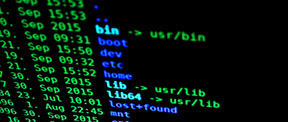**Exploring the Versatile ‘locate’ Command**
The Linux command line offers a plethora of powerful utilities, each designed for specific tasks. One such command, ‘locate,’ is particularly useful for locating files and directories on your system. While not as well-known as commands like ‘tree’ or ‘find,’ ‘locate’ provides a unique and efficient way to search for files.
**How ‘locate’ Works**
Unlike ‘find,’ which searches in real-time, ‘locate’ relies on a database that is regularly updated. This database, called ‘updatedb,’ indexes all files and directories on your system. As a result, ‘locate’ searches are much faster than ‘find,’ making it ideal for quickly locating files without having to traverse the entire file system.
**Basic Usage**
The basic syntax of ‘locate’ is:
“`
locate
“`
For example, to locate all files containing the string “example,” simply type:
“`
locate example
“`
‘locate’ will then display a list of all matching files and their full paths.
**Advanced Usage**
‘locate’ supports various options and flags to refine your search:
* **-r:** Recursively search subdirectories.
* **-e:** Match files with a specific extension (e.g., locate -e txt).
* **-i:** Ignore case in the search term.
* **-n:** Limit the number of results displayed.
**Example Uses**
Here are some practical examples of using the ‘locate’ command:
* **Find configuration files:**
“`
locate /etc/
“`
* **Locate log files:**
“`
locate *.log
“`
* **Search for a specific file name:**
“`
locate filename.txt
“`
* **Recursively search for files in a specific directory:**
“`
locate -r /home/user/Documents
“`
**Conclusion**
The ‘locate’ command is a valuable tool for quickly and efficiently searching for files and directories on your Linux system. Its reliance on a database makes it faster than ‘find’ for general searches, while its advanced options provide flexibility for more specific searches. Whether you’re a beginner or an experienced user, incorporating ‘locate’ into your workflow can significantly enhance your file management capabilities.
